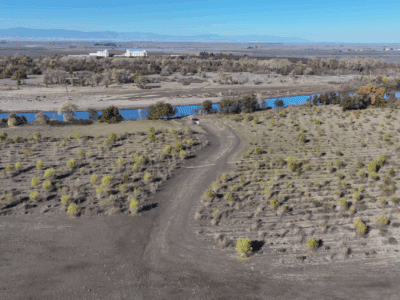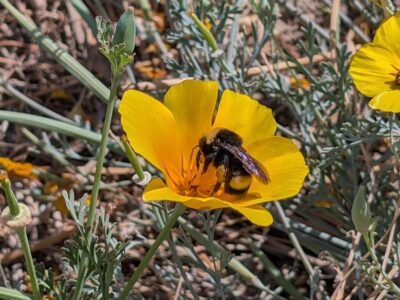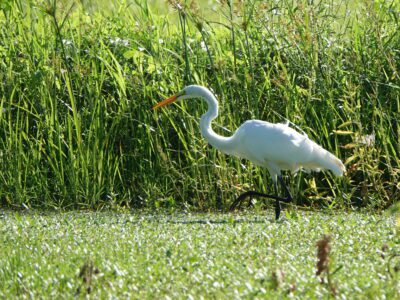History’s largest dam removal effort is currently taking place on the Klamath River. While the demolition and concrete removal in southern Oregon and Northern California were painstakingly planned for years, so was the renewal of the habitat that the Yurok, Hoopa, Karuk, Shasta, Klamath, and Modoc Tribes have depended on for millennia. Included in this renewal is the historic return of native grasses, plants, and trees that will complete the historic dam removal and river rebirth.
Every seed and plant placed in the ground is a step toward restoring these habitats to their pre-dam state and where they provided homes for complex plant communities and range of unique animal species. Contributing to the monumental renewal efforts was Heritage Growers Native Seed and Plant Supply, a venture launched by River Partners in 2021.
Proudly partnering with Resource Environmental Solutions (RES), the organization leading the overall Klamath River restoration effort, Heritage Growers grew and cultivated 40,000 plants and 1,500 pounds of locally adapted seed, including narrow leaf milkweed (habitat for pollinators), rock penstemon (drought-tolerant plants), and Lemmon’s needle grass (valued forage plant for birds and small mammals).
Planted and placed in January and February, small shrubs are taking root in the fertile soil, native grasses are sprouting skyward, and ground cover is coloring the riverside landscape. As Heritage Growers is seeding renewal on the Klamath River, General Manager Pat Reynolds said the years of detailed planning and determination that went into native seed cultivation for the project is paying off.
“Working with RES and the Yurok Tribe, the focus has always been on establishing the best possible habitat and they’ve provided the stock seed needed,” he said. “It’s not an easy task, but this partnership exemplifies the best practices of native habitat restoration today, and we’re proud to play a role in that.”
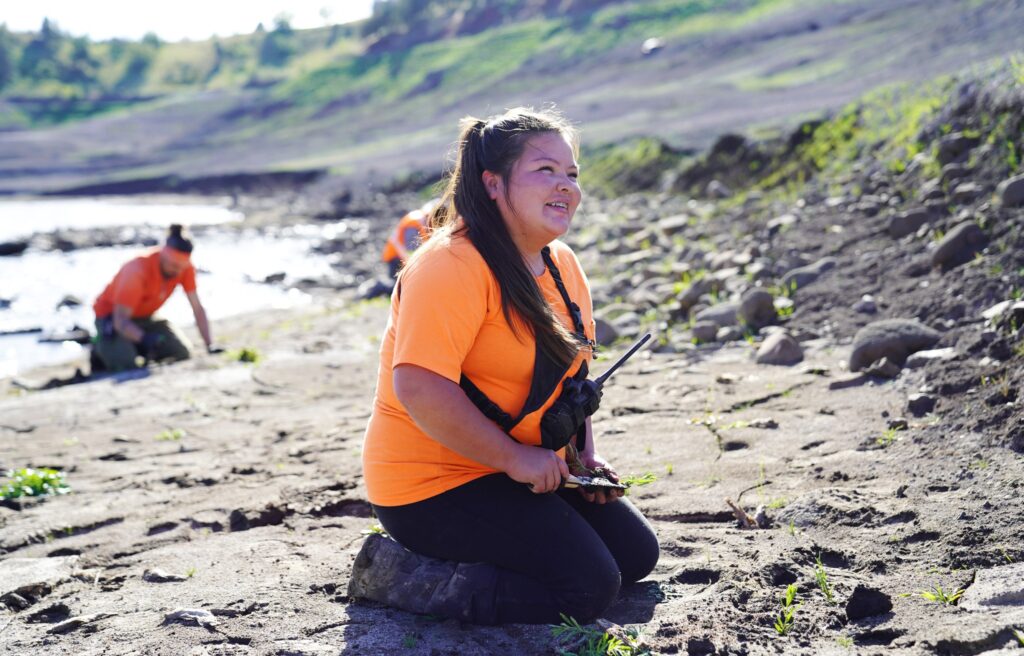
While contributing to the Klamath Dam restoration project is one of Heritage Growers’ larger efforts, it also sells seed to other statewide organizations like the California Department of Fish and Wildlife, California Department of Water Resources, and California Department of Transportation (CalTrans), among others.
Its primary customer, however, is River Partners, which purchases the seed for its own river restoration projects around the state. With the volume of projects, especially in the San Joaquin Valley, Heritage Growers remains busy growing native seed. Doing it correctly is a time-consuming endeavor. It all takes place at its 168-acre farm in Colusa, where in spring and summer golden yellow tidy tips, bright orange California poppies, and vibrant purple lupines are in full bloom.
Collecting wildland seed all the way through amplification (taking a small amount of seed and making more of it) to selling a viable product can take up to three years. In other words, the native seed that Heritage Growers is selling today was collected in the field in 2021.
In last year’s California Native Seed Strategy for Ecological Restoration report, the California Native Plant Society’s message was an urgent one: “Current seed stock is insufficient to meet growing needs. For these efforts to be successful, the state must invest in the core infrastructure necessary to support the escalating demand for native seed. Today, restoration practitioners are faced with a difficult decision: use whatever seed they can get (local or not), or don’t seed at all.”

Add California’s ambitious 30X30 initiative as well as other state-led climate and biodiversity initiatives, and the need for native and locally grown and locally collected seed is magnified.
The 30X30 initiative is aimed at conserving 30% of the state’s lands and coastal waters by the year 2030, placing emphasis on the dearth of regionally specific native seeds to meet California’s bold conservation and restoration goals. The product of multiple programs, legislation, and funding designed to support conservation, restoration, and land repurposing efforts, collective goals for the initiative include enhanced conservation on more than 7 million acres—a common theme is to meet the need for native habitat restoration and increased population of native plants, which are the most resilient and well-adapted to local ecosystems.
Heritage Growers Wildland Seed Collection Manager Haleigh Holgate said collecting native seed is vital to the success of habitat restoration.
“You’re really collecting genetics,” she said, “which will ensure that where that seed is propagated and sown will be at a higher success rate because it’s used to that climate and ecosystem.”
Holgate and her team scout potential locations for native seeds to be used in future restoration projects in that area (from San Diego to the Bay Area and across the Central Valley). And when they find viable seed, they carefully plan the best time to collect it—and they have to collect a lot of it, while still honoring the plant.
Flower photos above: 1. Amsinckia aff. Eastwoodiae; 2. Nemophila menziesii; 3. Erythranthe geniculata; 4. Medicago polymorpha; 5. Clarkia exilis; 6. Agoseris heterophylla; 7. Pholistoma auritum var. auritum; 8. Phacelia ciliata; 9. Phacelia ciliata; 10. Layia fremontii
“We’re all coming together to solve an issue. And it creates a stronger and more powerful and more successful mission,” Holgate said. “It’s really a feel-good thing.”
Heritage Growers Operations Manager Michele Ranieri notes that collecting native seeds can be a painstaking process, as it’s often difficult to collect large quantities.
“It depends on the population you find and you want to respect that population—if it’s small amount, you only take a small percentage of it,” she said. “In order to do restoration work, especially at the scale that River Partners is talking about, we’re not going to get by with a half a pound of seed. We need thousands of pounds of seed.”
Ranieri adds that the time frame to a finished product depends on how much they get at the beginning—a few ounces may take three or four years to get to scale, but a few pounds could take only two years.
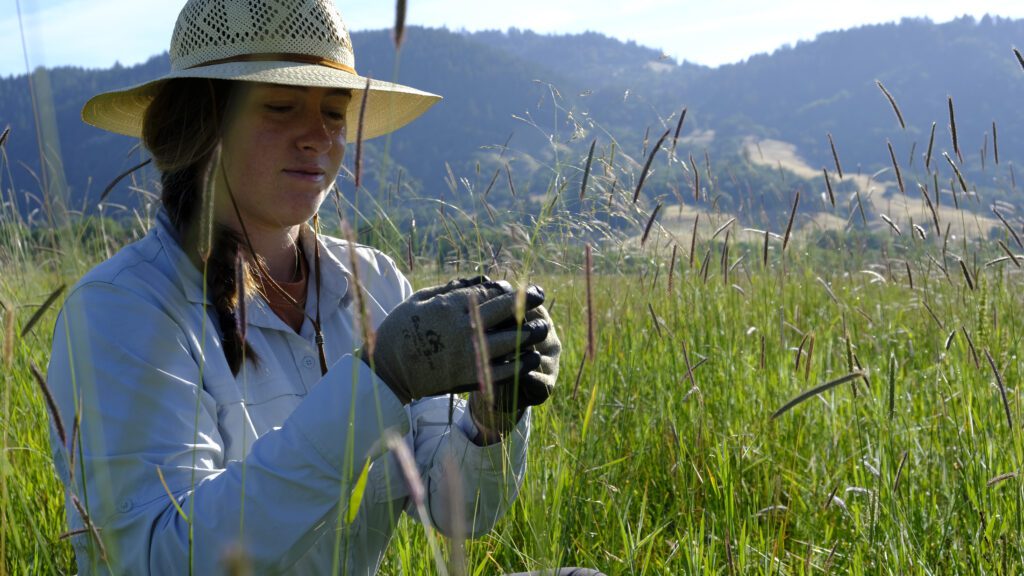
Much of the collected seed goes into Heritage Growers’ demonstration garden. Part living laboratory, part tourist attraction, the garden is a third of an acre and features 111 different native plants. Garden Coordinator Joan Bosque said the space, opened in 2022, allows for trialing new species, ecotypes, and plant forms before moving into production.
“This year we’re trialing a few new species from wetlands in Willits, a woody species, and geophytes, plants which typically store water and energy underground,” said Bosque, herself a Master Gardener. She also conducts and records weekly observation of phenological data collection (which studies the cyclical patterns of the events in the natural world), which informs their farming practices and restoration consultation.
“Information includes germination, flower set, seed set, any difficulty of harvesting, as well as pollinators and pests, and any other useful observations for large scale production,” Bosque adds.
The demonstration garden is also a representation of Heritage Growers’ main production fields, where approximately 90% of its crops are compressed into a microcosm of what the farm looks like.
“This allows visitors on tours to take in a wide view and interact with the species at a human scale,” said Bosque.

Around 70 people toured the garden in 2023. So far this year, more than 100 people from organizations like the Northern California Botany Symposium, CalTrans, and the U.S. Bureau of Land Management have toured it. Upcoming tours this year include the U.S. Fish and Wildlife Service and the California Association of Resource Conservation Districts.
Having felt the climate crisis at an early age, Holgate envisioned herself one day working at an ecological restoration organization. She called the pivot to native seed as “a plot twist.”
“I educated myself to be part of the solution however I could to the best of my abilities—and when I was older, I surrounded myself with ambitious people,” she said. “The native seed part started for me when I worked at a native plant nursery in Humboldt County where we collected our own seeds to propagate.”
And whether it’s providing seed for River Partners restoration projects like Dos Rios Ranch Preserve (which will open as California’s newest state park on June 12), future projects at Panorama Vista Preserve near Bakersfield, or history-making efforts such as providing seed for reviving the Klamath River, Holgate remains amazed to witness the intimate connection between humans and plants—and that it starts with the seeds.
“A little, tiny seed could turn into this monstrous tree. There’s all this stored energy right here, and I can see a lot of comparisons with humans, too,” she said. “We are these people with stored energy, the potential is large and vast, and it’s just a matter of watering it a little bit and nurturing it a little bit and then you get to see it grow. There’s a lot of beauty in that, too.”












